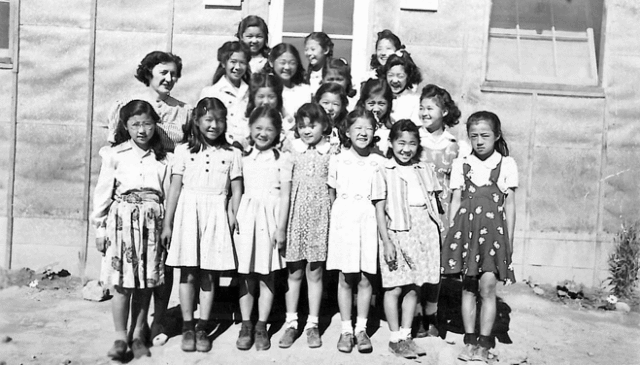
By Edward Yoshida
For The North American Post
After the war, local businesses went above and beyond to help the Tanaka family reestablish life in town. The grocery store extended credit to John’s dad, the bank gave him a loan, and what warmed me the most was hearing about the people whom John’s dad had unofficially loaned money to over the years drop by the café and pay him back even though John’s dad admitted that he had lost his ledgers during the war. Based on the Tanaka family’s experience and the fact that Japanese Americans were treated equally in the community prior to the war, it is not a stretch to induce that other Japanese families in Juneau were recipients of similar acts of kindness by the Caucasian Juneau community.
What made the Juneau community’s solidarity unbelievably impressive is when you place it in proper context of the reality in which they were living, which the filmmaker clarifies:
“The actual story of what happened in Juneau is more complex and nuanced than we were able to portray in 70 minutes. It’s important to remember that Alaska was a war zone at the time. Imperial Japan had invaded Alaskan territory and bombed Dutch Harbor several times. Racism and hatred against Japanese Americans was at a fever pitch in Alaska and the US in general.”
It was against this backdrop that the Juneau School Board voted unanimously to acknowledge the injustice of the Japanese American incarceration. It was against this backdrop that the Juneau community stood behind their longtime neighbors and friends. Awe-inspiring.
Fast forward approximately 70 years. The Juneau community remains proud of their stance during WWII and in fact dedicated a bronze Empty Chair Memorial in 2014. Fortunately, the f ilmmaker was able to present the documentary to local audiences just before the dedication. “It was an extremely emotional screening with many of the internment survivors present along with family members and a large cross section of the community.”
What a per fect ending t o this documentary, to capture the historic dedication ceremony. Consistent with the community’s solidarity during WWII, readers may appreciate that the memorial was not conceived by the Japanese American community. Of course it was completed “with the enthusiastic participation of Juneau’s present and past Japanese American community, but it is a somewhat unique monument in that it was undertaken by people from multiple heritages.”
I would be remiss if I did not mention the editing in this film, which really enhances the storytelling and keeps the viewer engaged.
Telling the story through those who lived it is very effective because it makes the film come to life. Otherwise, using a disembodied narrator’s voice may have translated into more of a dull or at least lackluster educational video presentation.
Also, varying the settings for the numerous interviews did wonders for me. Some were held in the sanctity of people’s residences; some were conducted outside around Juneau. The footage that I especially enjoyed was on location. The filmmaker and John Tanaka’s sister, Alice, who narrated much of the film, visited the area where Japanese Americans were dropped off to board ships away from Juneau. They also visited the Puyallup Fairgrounds, which was their assembly center in Washington.
In closing, the filmmaker reflects on some of his personal takeaways, looking back on the whole process:
“The extremely bittersweet aspect of making this documentary was that when I interviewed people who lived through the events, their grown children were often in the room. These children were often in their late 50s or older and they had never heard about the internment from their parents. In some cases the elders who gave me the gift of their stories have now passed away. If it hadn’t been for the documentary, these people’s stories would have vanished forever.
“When I was in my early 20s I interviewed my grandfather about his life. By taking the time to sit down with him and ask questions, I learned things I never would have known. He died several years ago and I really am glad that I took the time to do that. I realized that talking to your elders and drawing out their stories is one of the greatest gifts you can give to them, yourself, and future generations.”
And while the filmmaker intended his documentary to have a general American audience, if he were to specifically address young Japanese Americans, he would encourage them to “be aware of the extreme challenges their relatives faced and how ultimately they were able to overcome them.” He would also add that “the Japanese American community has also inherited a responsibility to be vigilant to ensure that another group does not suffer the same fate.”
Presently, Greg Chaney is working on a narrative feature film structured around the events covered in this documentary. Additionally, he is always searching for a photograph of the 1942 Juneau High School graduation ceremony. If anybody is interested in backing a feature film derived from this documentary or knows of a graduation photo capturing the empty chair, please contact greg.chaney.glacier. l.and.s@gmail.com.
Editor’s note: This is the second part of the article originally published in Discover Nikkei at www.discovernikkei. org managed by the Japanese American National Museum. The writer is a JANM/ Discover Nikkei volunteer and a project analyst at a regional engineering firm. He grew up in Los Angeles and Orange County before attending college back East.






